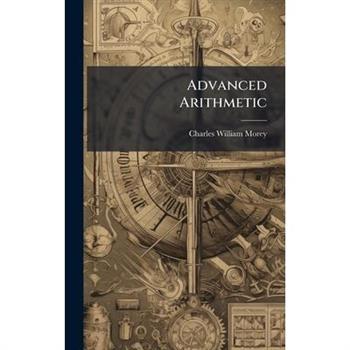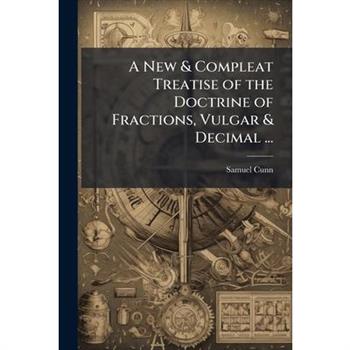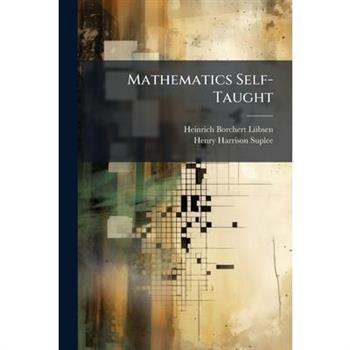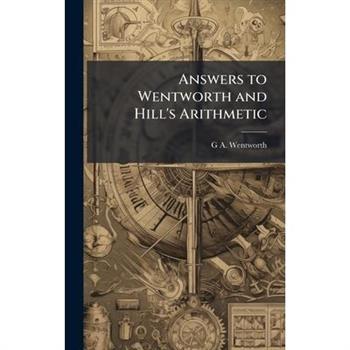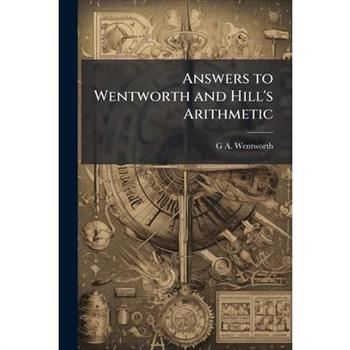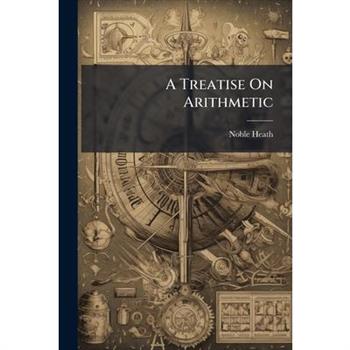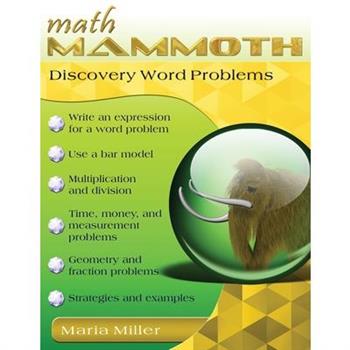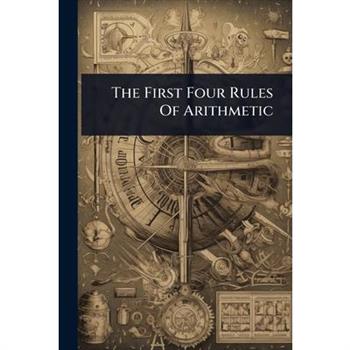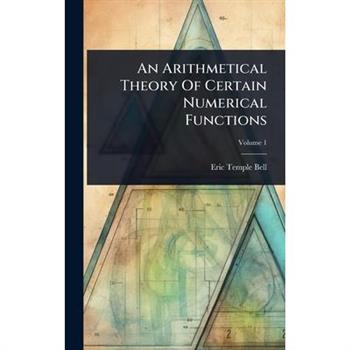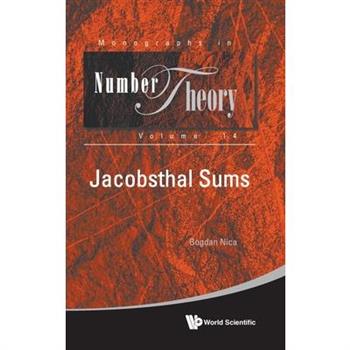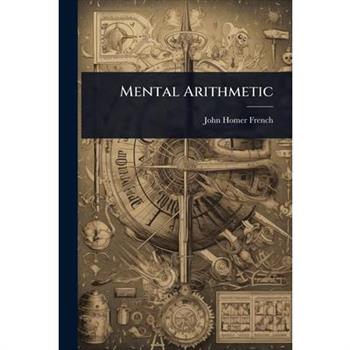Essays in Classical Number Theory
Offering a comprehensive introduction to number theory, this is the ideal book both for those who want to learn the subject seriously and independently, or for those already working in number theory who want to deepen their expertise. Readers will be treated to a rich experience, developing the key theoretical ideas while explicitly solving arithmetic problems, with the historical background of analytic and algebraic number theory woven throughout. Topics include methods of solving binomial congruences, a clear account of the quantum factorization of integers, and methods of explicitly representing integers by quadratic forms over integers. In the later parts of the book, the author provides a thorough approach towards composition and genera of quadratic forms, as well as the essentials for detecting bounded gaps between prime numbers that occur infinitely often.
A Treatise on the Theory and Solution of Algebraical Equations
"A Treatise on the Theory and Solution of Algebraical Equations" by John Macnie, originally published in 1876, is a comprehensive exploration of algebraic equations. This enduring work delves into the theoretical underpinnings of algebra, offering detailed methods for solving various types of equations. Aimed at students and scholars alike, the treatise provides a rigorous and systematic approach to understanding the complexities of algebraic solutions. Macnie's book covers a wide range of topics, ensuring readers gain a solid foundation in algebraic principles. This edition preserves the original insights and methodologies, making it an invaluable resource for anyone interested in the historical development of mathematical thought and the techniques used in solving algebraical equations during the late 19th century.This work has been selected by scholars as being culturally important, and is part of the knowledge base of civilization as we know it. This work was reproduced from the original artifact, and remains as true to the original work as possible. Therefore, you will see the original copyright references, library stamps (as most of these works have been housed in our most important libraries around the world), and other notations in the work.This work is in the public domain in the United States of America, and possibly other nations. Within the United States, you may freely copy and distribute this work, as no entity (individual or corporate) has a copyright on the body of the work.As a reproduction of a historical artifact, this work may contain missing or blurred pages, poor pictures, errant marks, etc. Scholars believe, and we concur, that this work is important enough to be preserved, reproduced, and made generally available to the public. We appreciate your support of the preservation process, and thank you for being an important part of keeping this knowledge alive and relevant.
A Treatise on the Theory and Solution of Algebraical Equations
"A Treatise on the Theory and Solution of Algebraical Equations" by John Macnie, originally published in 1876, is a comprehensive exploration of algebraic equations. This enduring work delves into the theoretical underpinnings of algebra, offering detailed methods for solving various types of equations. Aimed at students and scholars alike, the treatise provides a rigorous and systematic approach to understanding the complexities of algebraic solutions. Macnie's book covers a wide range of topics, ensuring readers gain a solid foundation in algebraic principles. This edition preserves the original insights and methodologies, making it an invaluable resource for anyone interested in the historical development of mathematical thought and the techniques used in solving algebraical equations during the late 19th century.This work has been selected by scholars as being culturally important, and is part of the knowledge base of civilization as we know it. This work was reproduced from the original artifact, and remains as true to the original work as possible. Therefore, you will see the original copyright references, library stamps (as most of these works have been housed in our most important libraries around the world), and other notations in the work.This work is in the public domain in the United States of America, and possibly other nations. Within the United States, you may freely copy and distribute this work, as no entity (individual or corporate) has a copyright on the body of the work.As a reproduction of a historical artifact, this work may contain missing or blurred pages, poor pictures, errant marks, etc. Scholars believe, and we concur, that this work is important enough to be preserved, reproduced, and made generally available to the public. We appreciate your support of the preservation process, and thank you for being an important part of keeping this knowledge alive and relevant.
Number Systems
Number Systems: A Path into Rigorous Mathematics aims to introduce number systems to an undergraduate audience in a way that emphasises the importance of rigour, and with a focus on providing detailed but accessible explanations of theorems and their proofs.The book continually seeks to build upon students' intuitive ideas of how numbers and arithmetic work, and to guide them towards the means to embed this natural understanding into a more structured framework of understanding. The author's motivation for writing this book is that most previous texts, which have complete coverage of the subject, have not provided the level of explanation needed for first-year students. On the other hand, those that do give good explanations tend to focus broadly on Foundations or Analysis and provide incomplete coverage of Number Systems.Features Approachable for first year undergraduates, but still of interest to more advanced students and postgraduates Does not merely present definitions, theorems and proofs, but also motivates them in terms of intuitive knowledge and discusses methods of proof Draws attention to connections with other areas of mathematics Plenty of exercises for students, both straightforward problems and more in-depth investigations Introduces many concepts that are required in more advanced topics in mathematics New to the second edition Complete solutions to all exercises, and hints for the in-depth investigations Extensive changes to chapters 4 and 5, including defining integral domains as distinct from commutative rings, a more complete discussion of irreducibles, primes and unique factorisation, and more topics in elementary number theory A completely revised chapter 8, giving a more coherent account of quadratic rings and their unique (or non-unique) factorisation properties A thorough correction of typos and errors across all chapters Updates to the bibliography
Number Systems
Number Systems: A Path into Rigorous Mathematics aims to introduce number systems to an undergraduate audience in a way that emphasises the importance of rigour, and with a focus on providing detailed but accessible explanations of theorems and their proofs.
A Treatise of Practical Arithmetic
"A Treatise of Practical Arithmetic" by Robert Patterson, originally published in 1819, provides a detailed exposition of arithmetical principles and their practical applications. This historical text offers insights into the methods of mathematical instruction prevalent in the early 19th century. Designed for both students and educators, the treatise covers a wide range of topics, offering a comprehensive guide to the arithmetic of its time. It remains valuable for those interested in the history of mathematics education and the evolution of arithmetical practices.This work has been selected by scholars as being culturally important, and is part of the knowledge base of civilization as we know it. This work was reproduced from the original artifact, and remains as true to the original work as possible. Therefore, you will see the original copyright references, library stamps (as most of these works have been housed in our most important libraries around the world), and other notations in the work.This work is in the public domain in the United States of America, and possibly other nations. Within the United States, you may freely copy and distribute this work, as no entity (individual or corporate) has a copyright on the body of the work.As a reproduction of a historical artifact, this work may contain missing or blurred pages, poor pictures, errant marks, etc. Scholars believe, and we concur, that this work is important enough to be preserved, reproduced, and made generally available to the public. We appreciate your support of the preservation process, and thank you for being an important part of keeping this knowledge alive and relevant.
Practical Mathematics
"Practical Mathematics, Volume 4: Being The Essentials Of Arithmetic, Geometry, Algebra And Trigonometry" offers a comprehensive overview of fundamental mathematical principles. Designed for practical application, this volume provides readers with a solid foundation in arithmetic, geometry, algebra, and trigonometry. Claude Irwin Palmer presents mathematical concepts in a clear, accessible manner, making this book an invaluable resource for students, educators, and anyone seeking to enhance their understanding of essential mathematical skills. The book emphasizes practical application and problem-solving, ensuring that readers can confidently apply their knowledge in real-world scenarios. Whether you're a student looking to solidify your understanding or a professional seeking a refresher, this volume offers a valuable guide to mastering the essentials of mathematics.This work has been selected by scholars as being culturally important, and is part of the knowledge base of civilization as we know it. This work was reproduced from the original artifact, and remains as true to the original work as possible. Therefore, you will see the original copyright references, library stamps (as most of these works have been housed in our most important libraries around the world), and other notations in the work.This work is in the public domain in the United States of America, and possibly other nations. Within the United States, you may freely copy and distribute this work, as no entity (individual or corporate) has a copyright on the body of the work.As a reproduction of a historical artifact, this work may contain missing or blurred pages, poor pictures, errant marks, etc. Scholars believe, and we concur, that this work is important enough to be preserved, reproduced, and made generally available to the public. We appreciate your support of the preservation process, and thank you for being an important part of keeping this knowledge alive and relevant.
Practical Mathematics
"Practical Mathematics, Volume 4: Being The Essentials Of Arithmetic, Geometry, Algebra And Trigonometry" offers a comprehensive overview of fundamental mathematical principles. Designed for practical application, this volume provides readers with a solid foundation in arithmetic, geometry, algebra, and trigonometry. Claude Irwin Palmer presents mathematical concepts in a clear, accessible manner, making this book an invaluable resource for students, educators, and anyone seeking to enhance their understanding of essential mathematical skills. The book emphasizes practical application and problem-solving, ensuring that readers can confidently apply their knowledge in real-world scenarios. Whether you're a student looking to solidify your understanding or a professional seeking a refresher, this volume offers a valuable guide to mastering the essentials of mathematics.This work has been selected by scholars as being culturally important, and is part of the knowledge base of civilization as we know it. This work was reproduced from the original artifact, and remains as true to the original work as possible. Therefore, you will see the original copyright references, library stamps (as most of these works have been housed in our most important libraries around the world), and other notations in the work.This work is in the public domain in the United States of America, and possibly other nations. Within the United States, you may freely copy and distribute this work, as no entity (individual or corporate) has a copyright on the body of the work.As a reproduction of a historical artifact, this work may contain missing or blurred pages, poor pictures, errant marks, etc. Scholars believe, and we concur, that this work is important enough to be preserved, reproduced, and made generally available to the public. We appreciate your support of the preservation process, and thank you for being an important part of keeping this knowledge alive and relevant.
Science Of Arithmetic. In Three Parts. Part I. Primary Arithmetic, Being An Explanation Of The Decimal System Of Expressing Numbers, And The Elementary Processes Of Numerical Calculation
"Science Of Arithmetic. In Three Parts. Part I. Primary Arithmetic" is a historical text offering an explanation of the decimal system and elementary numerical calculation. Originally published in 1849, this book provides insight into 19th-century mathematical education. The text emphasizes foundational concepts, making it useful for understanding the historical development of arithmetic teaching methods. This edition is a valuable resource for educators, historians of mathematics, and anyone interested in the evolution of primary education.This work has been selected by scholars as being culturally important, and is part of the knowledge base of civilization as we know it. This work was reproduced from the original artifact, and remains as true to the original work as possible. Therefore, you will see the original copyright references, library stamps (as most of these works have been housed in our most important libraries around the world), and other notations in the work.This work is in the public domain in the United States of America, and possibly other nations. Within the United States, you may freely copy and distribute this work, as no entity (individual or corporate) has a copyright on the body of the work.As a reproduction of a historical artifact, this work may contain missing or blurred pages, poor pictures, errant marks, etc. Scholars believe, and we concur, that this work is important enough to be preserved, reproduced, and made generally available to the public. We appreciate your support of the preservation process, and thank you for being an important part of keeping this knowledge alive and relevant.
Multiple Extension Algebraic Number Fields
Multiple Extension Algebraic Number Fields explores advanced topics in algebraic number theory, focusing on field extensions. This work by Chung-jen Ho delves into the complexities of number fields and their extensions, offering a rigorous mathematical treatment suitable for researchers and graduate students in mathematics. The book provides detailed analysis and proofs related to the structure and properties of these fields, making it a valuable resource for those studying advanced algebra and number theory.This work has been selected by scholars as being culturally important, and is part of the knowledge base of civilization as we know it. This work was reproduced from the original artifact, and remains as true to the original work as possible. Therefore, you will see the original copyright references, library stamps (as most of these works have been housed in our most important libraries around the world), and other notations in the work.This work is in the public domain in the United States of America, and possibly other nations. Within the United States, you may freely copy and distribute this work, as no entity (individual or corporate) has a copyright on the body of the work.As a reproduction of a historical artifact, this work may contain missing or blurred pages, poor pictures, errant marks, etc. Scholars believe, and we concur, that this work is important enough to be preserved, reproduced, and made generally available to the public. We appreciate your support of the preservation process, and thank you for being an important part of keeping this knowledge alive and relevant.
Practical Mathematics
"Practical Mathematics, Volume 3: Being The Essentials Of Arithmetic, Geometry, Algebra And Trigonometry" offers a comprehensive exploration of fundamental mathematical principles. This volume, authored by Claude Irwin Palmer, is designed to provide a solid foundation in essential mathematical concepts. Covering arithmetic, geometry, algebra, and trigonometry, the book aims to equip readers with practical mathematical skills. This book is a valuable resource for students, educators, and anyone seeking to enhance their understanding of mathematics. Palmer's approach emphasizes clarity and practicality, making complex topics accessible to a wide audience. Explore the core principles of mathematics with this meticulously crafted volume.This work has been selected by scholars as being culturally important, and is part of the knowledge base of civilization as we know it. This work was reproduced from the original artifact, and remains as true to the original work as possible. Therefore, you will see the original copyright references, library stamps (as most of these works have been housed in our most important libraries around the world), and other notations in the work.This work is in the public domain in the United States of America, and possibly other nations. Within the United States, you may freely copy and distribute this work, as no entity (individual or corporate) has a copyright on the body of the work.As a reproduction of a historical artifact, this work may contain missing or blurred pages, poor pictures, errant marks, etc. Scholars believe, and we concur, that this work is important enough to be preserved, reproduced, and made generally available to the public. We appreciate your support of the preservation process, and thank you for being an important part of keeping this knowledge alive and relevant.
Practical Mathematics
"Practical Mathematics, Volume 3: Being The Essentials Of Arithmetic, Geometry, Algebra And Trigonometry" offers a comprehensive exploration of fundamental mathematical principles. This volume, authored by Claude Irwin Palmer, is designed to provide a solid foundation in essential mathematical concepts. Covering arithmetic, geometry, algebra, and trigonometry, the book aims to equip readers with practical mathematical skills. This book is a valuable resource for students, educators, and anyone seeking to enhance their understanding of mathematics. Palmer's approach emphasizes clarity and practicality, making complex topics accessible to a wide audience. Explore the core principles of mathematics with this meticulously crafted volume.This work has been selected by scholars as being culturally important, and is part of the knowledge base of civilization as we know it. This work was reproduced from the original artifact, and remains as true to the original work as possible. Therefore, you will see the original copyright references, library stamps (as most of these works have been housed in our most important libraries around the world), and other notations in the work.This work is in the public domain in the United States of America, and possibly other nations. Within the United States, you may freely copy and distribute this work, as no entity (individual or corporate) has a copyright on the body of the work.As a reproduction of a historical artifact, this work may contain missing or blurred pages, poor pictures, errant marks, etc. Scholars believe, and we concur, that this work is important enough to be preserved, reproduced, and made generally available to the public. We appreciate your support of the preservation process, and thank you for being an important part of keeping this knowledge alive and relevant.
An Introduction To Arithmetic. [with] Key
"An Introduction To Arithmetic," complete with its answer key, is a comprehensive mathematics textbook intended for students learning the fundamentals of arithmetic. Authored by John Newark, this educational resource offers a structured approach to understanding and mastering essential arithmetic concepts. The book is designed to provide a solid foundation in basic mathematical operations and problem-solving techniques. With its detailed explanations and a dedicated key for checking answers, this book supports independent learning and effective classroom instruction.This work has been selected by scholars as being culturally important, and is part of the knowledge base of civilization as we know it. This work was reproduced from the original artifact, and remains as true to the original work as possible. Therefore, you will see the original copyright references, library stamps (as most of these works have been housed in our most important libraries around the world), and other notations in the work.This work is in the public domain in the United States of America, and possibly other nations. Within the United States, you may freely copy and distribute this work, as no entity (individual or corporate) has a copyright on the body of the work.As a reproduction of a historical artifact, this work may contain missing or blurred pages, poor pictures, errant marks, etc. Scholars believe, and we concur, that this work is important enough to be preserved, reproduced, and made generally available to the public. We appreciate your support of the preservation process, and thank you for being an important part of keeping this knowledge alive and relevant.
An Introduction To Arithmetic. [with] Key
"An Introduction To Arithmetic," complete with its answer key, is a comprehensive mathematics textbook intended for students learning the fundamentals of arithmetic. Authored by John Newark, this educational resource offers a structured approach to understanding and mastering essential arithmetic concepts. The book is designed to provide a solid foundation in basic mathematical operations and problem-solving techniques. With its detailed explanations and a dedicated key for checking answers, this book supports independent learning and effective classroom instruction.This work has been selected by scholars as being culturally important, and is part of the knowledge base of civilization as we know it. This work was reproduced from the original artifact, and remains as true to the original work as possible. Therefore, you will see the original copyright references, library stamps (as most of these works have been housed in our most important libraries around the world), and other notations in the work.This work is in the public domain in the United States of America, and possibly other nations. Within the United States, you may freely copy and distribute this work, as no entity (individual or corporate) has a copyright on the body of the work.As a reproduction of a historical artifact, this work may contain missing or blurred pages, poor pictures, errant marks, etc. Scholars believe, and we concur, that this work is important enough to be preserved, reproduced, and made generally available to the public. We appreciate your support of the preservation process, and thank you for being an important part of keeping this knowledge alive and relevant.
Pi is not alone !
In next 20 minutes your thinking about π (Pi) is going to change .Explore the hidden side of π .Yes it is not the History but the future of Pi you are going to explore. The most used mathematical constant which remained a secret for thousands of years will be unfolded. know what is common between square, triangle and circle? find yourself how circle is not a special shape but only a regular polygon with infinite sides Don't you want to know a single formula, which you can use for calculating the area of square, triangle and the circle? .Calculate yourself the accurate value of π up to any digits, that too in seconds .You will also know the interesting relation between accuracy of pi and its result on circumference of circle! So let us start the journey where no one has gone before.Chap-1 is about Pi day, starting point of the journey.Chap-2 is the brief history of origin and works done on Pi. About the people involved in search of accuracy of Pi.Chap-3 will ignite a question about peculiarity of the constant Pi .Chap-4 will show different probable paths for solutions to the above question.Chap-6,7,8,9 will successfully explore new constants equivalent to Pi in shapes such as square, triangle and hexagons.Chap-10 will find a general formula about finding Pi equivalents for each shape.Chap-11 will establish a bridge between all new pi equivalents to the Pi.Chap 12 is about how much accuracy of Pi is enough for the world.Chap 13 end of journey with a great feeling about all the new friends of PI.
Number Theory
This is a book for an undergraduate number theory course, senior thesis work, graduate level study, or for those wishing to learn about applications of number theory to data encryption and security. With no abstract algebra background required, it covers congruences, the Euclidean algorithm, linear Diophantine equations, the Chinese Remainder Theorem, Mobius inversion formula, Pythagorean triplets, perfect numbers and amicable pairs, Law of Quadratic Reciprocity, theorems on sums of squares, Farey fractions, periodic continued fractions, best rational approximations, and Pell's equation. Results are applied to factoring and primality testing including those for Mersenne and Fermat primes, probabilistic primality tests, Pollard's rho and p-1 factorization algorithms, and others. Also an introduction to cryptology with a full discussion of the RSA algorithm, discrete logarithms, and digital signatures. Chapters on analytic number theory including the Riemann zeta function, average orders of the lattice and divisor functions, Chebyshev's theorems, and Bertrand's Postulate. A chapter introduces additive number theory with discussion of Waring's Problem, the pentagonal number theorem for partitions, and Schnirelmann density.
Multiple Extension Algebraic Number Fields
Multiple Extension Algebraic Number Fields explores advanced topics in algebraic number theory, focusing on field extensions. This work by Chung-jen Ho delves into the complexities of number fields and their extensions, offering a rigorous mathematical treatment suitable for researchers and graduate students in mathematics. The book provides detailed analysis and proofs related to the structure and properties of these fields, making it a valuable resource for those studying advanced algebra and number theory.This work has been selected by scholars as being culturally important, and is part of the knowledge base of civilization as we know it. This work was reproduced from the original artifact, and remains as true to the original work as possible. Therefore, you will see the original copyright references, library stamps (as most of these works have been housed in our most important libraries around the world), and other notations in the work.This work is in the public domain in the United States of America, and possibly other nations. Within the United States, you may freely copy and distribute this work, as no entity (individual or corporate) has a copyright on the body of the work.As a reproduction of a historical artifact, this work may contain missing or blurred pages, poor pictures, errant marks, etc. Scholars believe, and we concur, that this work is important enough to be preserved, reproduced, and made generally available to the public. We appreciate your support of the preservation process, and thank you for being an important part of keeping this knowledge alive and relevant.
Science Of Arithmetic. In Three Parts. Part I. Primary Arithmetic, Being An Explanation Of The Decimal System Of Expressing Numbers, And The Elementary Processes Of Numerical Calculation
"Science Of Arithmetic. In Three Parts. Part I. Primary Arithmetic" is a historical text offering an explanation of the decimal system and elementary numerical calculation. Originally published in 1849, this book provides insight into 19th-century mathematical education. The text emphasizes foundational concepts, making it useful for understanding the historical development of arithmetic teaching methods. This edition is a valuable resource for educators, historians of mathematics, and anyone interested in the evolution of primary education.This work has been selected by scholars as being culturally important, and is part of the knowledge base of civilization as we know it. This work was reproduced from the original artifact, and remains as true to the original work as possible. Therefore, you will see the original copyright references, library stamps (as most of these works have been housed in our most important libraries around the world), and other notations in the work.This work is in the public domain in the United States of America, and possibly other nations. Within the United States, you may freely copy and distribute this work, as no entity (individual or corporate) has a copyright on the body of the work.As a reproduction of a historical artifact, this work may contain missing or blurred pages, poor pictures, errant marks, etc. Scholars believe, and we concur, that this work is important enough to be preserved, reproduced, and made generally available to the public. We appreciate your support of the preservation process, and thank you for being an important part of keeping this knowledge alive and relevant.
Cocker's Decimal Arithmetick. Whereunto Is Added, His Artificial Arithmetick. Also His Algebraical Arithmetick. Perused, Corrected, and Publ. by J. Hawkins
"Cocker's Decimal Arithmetick" is a comprehensive mathematical text first published in the 17th century. This edition, perused, corrected, and published by J. Hawkins, includes not only Cocker's work on decimal arithmetic but also his artificial arithmetic and algebraical arithmetic, offering a complete overview of the mathematical knowledge of the time. The book showcases the methods used in early mathematical education and provides insight into the evolution of arithmetic and algebraic techniques. A valuable resource for historians of mathematics and anyone interested in the development of mathematical practices.This work has been selected by scholars as being culturally important, and is part of the knowledge base of civilization as we know it. This work was reproduced from the original artifact, and remains as true to the original work as possible. Therefore, you will see the original copyright references, library stamps (as most of these works have been housed in our most important libraries around the world), and other notations in the work.This work is in the public domain in the United States of America, and possibly other nations. Within the United States, you may freely copy and distribute this work, as no entity (individual or corporate) has a copyright on the body of the work.As a reproduction of a historical artifact, this work may contain missing or blurred pages, poor pictures, errant marks, etc. Scholars believe, and we concur, that this work is important enough to be preserved, reproduced, and made generally available to the public. We appreciate your support of the preservation process, and thank you for being an important part of keeping this knowledge alive and relevant.
Cocker's Decimal Arithmetick. Whereunto Is Added, His Artificial Arithmetick. Also His Algebraical Arithmetick. Perused, Corrected, and Publ. by J. Hawkins
"Cocker's Decimal Arithmetick" is a comprehensive mathematical text first published in the 17th century. This edition, perused, corrected, and published by J. Hawkins, includes not only Cocker's work on decimal arithmetic but also his artificial arithmetic and algebraical arithmetic, offering a complete overview of the mathematical knowledge of the time. The book showcases the methods used in early mathematical education and provides insight into the evolution of arithmetic and algebraic techniques. A valuable resource for historians of mathematics and anyone interested in the development of mathematical practices.This work has been selected by scholars as being culturally important, and is part of the knowledge base of civilization as we know it. This work was reproduced from the original artifact, and remains as true to the original work as possible. Therefore, you will see the original copyright references, library stamps (as most of these works have been housed in our most important libraries around the world), and other notations in the work.This work is in the public domain in the United States of America, and possibly other nations. Within the United States, you may freely copy and distribute this work, as no entity (individual or corporate) has a copyright on the body of the work.As a reproduction of a historical artifact, this work may contain missing or blurred pages, poor pictures, errant marks, etc. Scholars believe, and we concur, that this work is important enough to be preserved, reproduced, and made generally available to the public. We appreciate your support of the preservation process, and thank you for being an important part of keeping this knowledge alive and relevant.
Multiply and Divide within 100
This workbook contains 45 printable pages to help your students multiply and divide within 100: Putting numbers in order (4 pages)Missing numbers (3 pages)Match the arrays (3 pages)Create your own arrays (2 pages)Polygons and multiplication (4 pages)Putting products in order (3 pages)Least or Greatest (3 pages)Counting the corners/vertices (1 page)Counting the edges (1 page)Multiplication Tic-Tac-Toe (5 pages)Explain the math using words (3 pages)Multiples (1 page)Practice, Practice, Practice (12 pages)Common Core Standard: Math.3.OA.C.7If your students like math challenges, then this workbook is what you need. And, if you are interested in more multiplication activities, then take a look at these other workbooks available at Amazon: Multiply and Divide within 100Multiplication and DivisionMultiplication Chart MadnessMultiplication Tic-Tac-ToeMultiplication Mastery: Multi-digit Multiplication WorkbookFirst Day of School: Multiplication and Division GamesSummer Fun with MultiplicationHalloween Multiplication and DivisionInsect MultiplicationMoney, Measuring and MultiplicationDomino Multiplication: a workbook to practice your times tables
Summer Math Challenge
This workbook contains 91 printable math pages to help your students finish out the year and get ready for next year. Each page contains high-interest images and unique approaches to traditional geometry and arithmetic. Page titles: How good are you with numbers, Sequence, What is missing, Putting things in order, Tic-Tac-Toe, Match the arrays, Missing numbers, Area and Perimeter, Find the errors, How many cubes, Drawing triangles, Estimating coins, Comparing animals, Idiom hangman, Identifying circles, How many triangles, Polygons, Comparing differences, How many rectangles, Putting products in order, Identifying triangles, Comparing sums, How many circles, Estimating with odd numbers, What is the same...different, Multiples, and more...If you are looking for a unique approach to Common Core Standards, then this workbook is what you want. If you want more activities for the summer, then take a look at these summer workbooks: Summer Math Challenge: Third gradeSummer Math Challenge: Fourth gradeSummer Math Challenge: Fifth gradeSummer: Increasing NUMBER PowerSummer: Increasing WORD PowerSummer Critical Thinking Challenges (5th Grade) Summer Critical Thinking Challenges (6th Grade) Summer Critical Thinking Challenges (7th Grade) Summer Critical Thinking Challenges (8th Grade) Summer Fun with BrainteasersSummer Fun with Compound WordsSummer Fun with ElephantsSummer Fun with GeometrySummer Fun with MonkeysSummer Fun with MultiplicationSummer Fun with WordsSummer Fun Writing Personal LettersSummer Math - FractionsSummer Wildlife Writing: 75 Writing Prompts to Engage the Mind about WildlifeSummer Workbook: Third gradeSummer Workbook: Fourth gradeSummer Workbook: Fifth gradeSummer Writing - 4th gradeSummer Writing - 5th gradeSummer Writing - 150 Writing PromptsSummer Math and Writing: Third GradeSummer Math and Writing: Fourth Grade
A New & Compleat Treatise of the Doctrine of Fractions, Vulgar & Decimal ...
"A New & Compleat Treatise of the Doctrine of Fractions, Vulgar & Decimal," by Samuel Cunn, first published in 1714, offers a comprehensive exploration of fractions, both vulgar (common) and decimal, as understood in the early 18th century. This treatise provides a detailed explanation of arithmetical principles and practices related to fractions, offering insights into the mathematical techniques employed during this period. In addition to its focus on fractions, the book includes an epitome of duodecimals-a system of calculation based on twelve-and an idea of measuring, showcasing practical applications of mathematical concepts in everyday life. This work is a valuable resource for those interested in the history of mathematics, early modern education, and the evolution of mathematical notation and methodology. Cunn's treatise reflects the intellectual curiosity and practical concerns of his time, making it a compelling read for historians, mathematicians, and anyone fascinated by the development of mathematical thought.This work has been selected by scholars as being culturally important, and is part of the knowledge base of civilization as we know it. This work was reproduced from the original artifact, and remains as true to the original work as possible. Therefore, you will see the original copyright references, library stamps (as most of these works have been housed in our most important libraries around the world), and other notations in the work.This work is in the public domain in the United States of America, and possibly other nations. Within the United States, you may freely copy and distribute this work, as no entity (individual or corporate) has a copyright on the body of the work.As a reproduction of a historical artifact, this work may contain missing or blurred pages, poor pictures, errant marks, etc. Scholars believe, and we concur, that this work is important enough to be preserved, reproduced, and made generally available to the public. We appreciate your support of the preservation process, and thank you for being an important part of keeping this knowledge alive and relevant.
Advanced Arithmetic
Advanced Arithmetic, by Charles William Morey, offers a comprehensive exploration of arithmetic principles designed for advanced students and educators. Published in 1917, this book provides a detailed study of fundamental arithmetic concepts, accompanied by numerous exercises and practical applications. Morey's work not only covers standard topics but also delves into advanced areas, making it an invaluable resource for those seeking a deeper understanding of mathematical reasoning. Its historical context provides insight into early 20th-century educational practices, offering a unique perspective on the teaching of arithmetic. This edition retains the original content, ensuring that readers can experience the material as it was initially intended. Whether used as a reference, a teaching aid, or a historical artifact, 'Advanced Arithmetic' remains a valuable contribution to the field of mathematics education.This work has been selected by scholars as being culturally important, and is part of the knowledge base of civilization as we know it. This work was reproduced from the original artifact, and remains as true to the original work as possible. Therefore, you will see the original copyright references, library stamps (as most of these works have been housed in our most important libraries around the world), and other notations in the work.This work is in the public domain in the United States of America, and possibly other nations. Within the United States, you may freely copy and distribute this work, as no entity (individual or corporate) has a copyright on the body of the work.As a reproduction of a historical artifact, this work may contain missing or blurred pages, poor pictures, errant marks, etc. Scholars believe, and we concur, that this work is important enough to be preserved, reproduced, and made generally available to the public. We appreciate your support of the preservation process, and thank you for being an important part of keeping this knowledge alive and relevant.
Arithmetic [Elementary, Intermediate, Advanced]
"Arithmetic [Elementary, Intermediate, Advanced]" by Charles Ernest Chadsey, originally published in 1879, presents a comprehensive exploration of arithmetic principles. Designed as an educational textbook, it covers foundational concepts suitable for elementary to advanced learners. This historical text provides insight into 19th-century teaching methodologies, offering a structured approach to mastering arithmetic. Readers will find a clear progression of lessons intended to build a solid understanding of mathematical problem-solving. A valuable resource for educators and anyone interested in the historical development of mathematical education.This work has been selected by scholars as being culturally important, and is part of the knowledge base of civilization as we know it. This work was reproduced from the original artifact, and remains as true to the original work as possible. Therefore, you will see the original copyright references, library stamps (as most of these works have been housed in our most important libraries around the world), and other notations in the work.This work is in the public domain in the United States of America, and possibly other nations. Within the United States, you may freely copy and distribute this work, as no entity (individual or corporate) has a copyright on the body of the work.As a reproduction of a historical artifact, this work may contain missing or blurred pages, poor pictures, errant marks, etc. Scholars believe, and we concur, that this work is important enough to be preserved, reproduced, and made generally available to the public. We appreciate your support of the preservation process, and thank you for being an important part of keeping this knowledge alive and relevant.
A Practical Treatise On Arithmetic
"A Practical Treatise On Arithmetic" by George Leonard, originally published in 1839, offers a comprehensive system for understanding arithmetic principles. This treatise distinguishes itself by explaining each concept in a simple and accessible manner, making it ideal for students and educators alike. Beyond basic calculations, the book includes a detailed description of bookkeeping practices, providing practical applications for the arithmetic principles discussed. This combination of theoretical knowledge and practical skills makes it a valuable resource for anyone seeking a solid foundation in mathematics and financial record-keeping. Its historical context also provides insight into 19th-century educational methods.This work has been selected by scholars as being culturally important, and is part of the knowledge base of civilization as we know it. This work was reproduced from the original artifact, and remains as true to the original work as possible. Therefore, you will see the original copyright references, library stamps (as most of these works have been housed in our most important libraries around the world), and other notations in the work.This work is in the public domain in the United States of America, and possibly other nations. Within the United States, you may freely copy and distribute this work, as no entity (individual or corporate) has a copyright on the body of the work.As a reproduction of a historical artifact, this work may contain missing or blurred pages, poor pictures, errant marks, etc. Scholars believe, and we concur, that this work is important enough to be preserved, reproduced, and made generally available to the public. We appreciate your support of the preservation process, and thank you for being an important part of keeping this knowledge alive and relevant.
A Practical Treatise On Arithmetic
"A Practical Treatise On Arithmetic" by George Leonard, originally published in 1839, offers a comprehensive system for understanding arithmetic principles. This treatise distinguishes itself by explaining each concept in a simple and accessible manner, making it ideal for students and educators alike. Beyond basic calculations, the book includes a detailed description of bookkeeping practices, providing practical applications for the arithmetic principles discussed. This combination of theoretical knowledge and practical skills makes it a valuable resource for anyone seeking a solid foundation in mathematics and financial record-keeping. Its historical context also provides insight into 19th-century educational methods.This work has been selected by scholars as being culturally important, and is part of the knowledge base of civilization as we know it. This work was reproduced from the original artifact, and remains as true to the original work as possible. Therefore, you will see the original copyright references, library stamps (as most of these works have been housed in our most important libraries around the world), and other notations in the work.This work is in the public domain in the United States of America, and possibly other nations. Within the United States, you may freely copy and distribute this work, as no entity (individual or corporate) has a copyright on the body of the work.As a reproduction of a historical artifact, this work may contain missing or blurred pages, poor pictures, errant marks, etc. Scholars believe, and we concur, that this work is important enough to be preserved, reproduced, and made generally available to the public. We appreciate your support of the preservation process, and thank you for being an important part of keeping this knowledge alive and relevant.
Arithmetic [Elementary, Intermediate, Advanced]
"Arithmetic [Elementary, Intermediate, Advanced]" by Charles Ernest Chadsey, originally published in 1879, presents a comprehensive exploration of arithmetic principles. Designed as an educational textbook, it covers foundational concepts suitable for elementary to advanced learners. This historical text provides insight into 19th-century teaching methodologies, offering a structured approach to mastering arithmetic. Readers will find a clear progression of lessons intended to build a solid understanding of mathematical problem-solving. A valuable resource for educators and anyone interested in the historical development of mathematical education.This work has been selected by scholars as being culturally important, and is part of the knowledge base of civilization as we know it. This work was reproduced from the original artifact, and remains as true to the original work as possible. Therefore, you will see the original copyright references, library stamps (as most of these works have been housed in our most important libraries around the world), and other notations in the work.This work is in the public domain in the United States of America, and possibly other nations. Within the United States, you may freely copy and distribute this work, as no entity (individual or corporate) has a copyright on the body of the work.As a reproduction of a historical artifact, this work may contain missing or blurred pages, poor pictures, errant marks, etc. Scholars believe, and we concur, that this work is important enough to be preserved, reproduced, and made generally available to the public. We appreciate your support of the preservation process, and thank you for being an important part of keeping this knowledge alive and relevant.
Advanced Arithmetic
Advanced Arithmetic, by Charles William Morey, offers a comprehensive exploration of arithmetic principles designed for advanced students and educators. Published in 1917, this book provides a detailed study of fundamental arithmetic concepts, accompanied by numerous exercises and practical applications. Morey's work not only covers standard topics but also delves into advanced areas, making it an invaluable resource for those seeking a deeper understanding of mathematical reasoning. Its historical context provides insight into early 20th-century educational practices, offering a unique perspective on the teaching of arithmetic. This edition retains the original content, ensuring that readers can experience the material as it was initially intended. Whether used as a reference, a teaching aid, or a historical artifact, 'Advanced Arithmetic' remains a valuable contribution to the field of mathematics education.This work has been selected by scholars as being culturally important, and is part of the knowledge base of civilization as we know it. This work was reproduced from the original artifact, and remains as true to the original work as possible. Therefore, you will see the original copyright references, library stamps (as most of these works have been housed in our most important libraries around the world), and other notations in the work.This work is in the public domain in the United States of America, and possibly other nations. Within the United States, you may freely copy and distribute this work, as no entity (individual or corporate) has a copyright on the body of the work.As a reproduction of a historical artifact, this work may contain missing or blurred pages, poor pictures, errant marks, etc. Scholars believe, and we concur, that this work is important enough to be preserved, reproduced, and made generally available to the public. We appreciate your support of the preservation process, and thank you for being an important part of keeping this knowledge alive and relevant.
A New & Compleat Treatise of the Doctrine of Fractions, Vulgar & Decimal ...
"A New & Compleat Treatise of the Doctrine of Fractions, Vulgar & Decimal," by Samuel Cunn, first published in 1714, offers a comprehensive exploration of fractions, both vulgar (common) and decimal, as understood in the early 18th century. This treatise provides a detailed explanation of arithmetical principles and practices related to fractions, offering insights into the mathematical techniques employed during this period. In addition to its focus on fractions, the book includes an epitome of duodecimals-a system of calculation based on twelve-and an idea of measuring, showcasing practical applications of mathematical concepts in everyday life. This work is a valuable resource for those interested in the history of mathematics, early modern education, and the evolution of mathematical notation and methodology. Cunn's treatise reflects the intellectual curiosity and practical concerns of his time, making it a compelling read for historians, mathematicians, and anyone fascinated by the development of mathematical thought.This work has been selected by scholars as being culturally important, and is part of the knowledge base of civilization as we know it. This work was reproduced from the original artifact, and remains as true to the original work as possible. Therefore, you will see the original copyright references, library stamps (as most of these works have been housed in our most important libraries around the world), and other notations in the work.This work is in the public domain in the United States of America, and possibly other nations. Within the United States, you may freely copy and distribute this work, as no entity (individual or corporate) has a copyright on the body of the work.As a reproduction of a historical artifact, this work may contain missing or blurred pages, poor pictures, errant marks, etc. Scholars believe, and we concur, that this work is important enough to be preserved, reproduced, and made generally available to the public. We appreciate your support of the preservation process, and thank you for being an important part of keeping this knowledge alive and relevant.
Mathematics Self-Taught
Mathematics Self-Taught presents Heinrich Borchert L?1/4bsen's innovative method for self-instruction in mathematics, tailored for practical application. This volume, the first in the series, focuses on arithmetic and algebra, providing a comprehensive foundation for learners seeking to master mathematical concepts independently. Originally published in 1897, this work offers a glimpse into 19th-century pedagogical approaches, emphasizing clear explanations and practical problem-solving. The 'L?1/4bsen Method' is designed to empower individuals to acquire mathematical skills at their own pace, making it a valuable resource for students and professionals alike. Discover a time-tested approach to learning mathematics with 'Mathematics Self-Taught, ' and unlock the potential of self-directed education.This work has been selected by scholars as being culturally important, and is part of the knowledge base of civilization as we know it. This work was reproduced from the original artifact, and remains as true to the original work as possible. Therefore, you will see the original copyright references, library stamps (as most of these works have been housed in our most important libraries around the world), and other notations in the work.This work is in the public domain in the United States of America, and possibly other nations. Within the United States, you may freely copy and distribute this work, as no entity (individual or corporate) has a copyright on the body of the work.As a reproduction of a historical artifact, this work may contain missing or blurred pages, poor pictures, errant marks, etc. Scholars believe, and we concur, that this work is important enough to be preserved, reproduced, and made generally available to the public. We appreciate your support of the preservation process, and thank you for being an important part of keeping this knowledge alive and relevant.
Mathematics Self-Taught
Mathematics Self-Taught presents Heinrich Borchert L?1/4bsen's innovative method for self-instruction in mathematics, tailored for practical application. This volume, the first in the series, focuses on arithmetic and algebra, providing a comprehensive foundation for learners seeking to master mathematical concepts independently. Originally published in 1897, this work offers a glimpse into 19th-century pedagogical approaches, emphasizing clear explanations and practical problem-solving. The 'L?1/4bsen Method' is designed to empower individuals to acquire mathematical skills at their own pace, making it a valuable resource for students and professionals alike. Discover a time-tested approach to learning mathematics with 'Mathematics Self-Taught, ' and unlock the potential of self-directed education.This work has been selected by scholars as being culturally important, and is part of the knowledge base of civilization as we know it. This work was reproduced from the original artifact, and remains as true to the original work as possible. Therefore, you will see the original copyright references, library stamps (as most of these works have been housed in our most important libraries around the world), and other notations in the work.This work is in the public domain in the United States of America, and possibly other nations. Within the United States, you may freely copy and distribute this work, as no entity (individual or corporate) has a copyright on the body of the work.As a reproduction of a historical artifact, this work may contain missing or blurred pages, poor pictures, errant marks, etc. Scholars believe, and we concur, that this work is important enough to be preserved, reproduced, and made generally available to the public. We appreciate your support of the preservation process, and thank you for being an important part of keeping this knowledge alive and relevant.
Answers to Wentworth and Hill's Arithmetic
"Answers to Wentworth and Hill's Arithmetic" provides a comprehensive collection of solutions to the problems presented in the original textbook. Designed as a companion resource, this book offers students and educators alike a valuable tool for verifying accuracy and reinforcing understanding of fundamental arithmetic principles. G.A. Wentworth's expertise in mathematics education shines through, ensuring that each answer is presented with clarity and precision. This resource is ideal for self-study, classroom use, or homeschooling environments. It supports the development of essential mathematical skills. This edition ensures that this classic educational aid remains accessible to contemporary learners.This work has been selected by scholars as being culturally important, and is part of the knowledge base of civilization as we know it. This work was reproduced from the original artifact, and remains as true to the original work as possible. Therefore, you will see the original copyright references, library stamps (as most of these works have been housed in our most important libraries around the world), and other notations in the work.This work is in the public domain in the United States of America, and possibly other nations. Within the United States, you may freely copy and distribute this work, as no entity (individual or corporate) has a copyright on the body of the work.As a reproduction of a historical artifact, this work may contain missing or blurred pages, poor pictures, errant marks, etc. Scholars believe, and we concur, that this work is important enough to be preserved, reproduced, and made generally available to the public. We appreciate your support of the preservation process, and thank you for being an important part of keeping this knowledge alive and relevant.
Answers to Wentworth and Hill's Arithmetic
"Answers to Wentworth and Hill's Arithmetic" provides a comprehensive collection of solutions to the problems presented in the original textbook. Designed as a companion resource, this book offers students and educators alike a valuable tool for verifying accuracy and reinforcing understanding of fundamental arithmetic principles. G.A. Wentworth's expertise in mathematics education shines through, ensuring that each answer is presented with clarity and precision. This resource is ideal for self-study, classroom use, or homeschooling environments. It supports the development of essential mathematical skills. This edition ensures that this classic educational aid remains accessible to contemporary learners.This work has been selected by scholars as being culturally important, and is part of the knowledge base of civilization as we know it. This work was reproduced from the original artifact, and remains as true to the original work as possible. Therefore, you will see the original copyright references, library stamps (as most of these works have been housed in our most important libraries around the world), and other notations in the work.This work is in the public domain in the United States of America, and possibly other nations. Within the United States, you may freely copy and distribute this work, as no entity (individual or corporate) has a copyright on the body of the work.As a reproduction of a historical artifact, this work may contain missing or blurred pages, poor pictures, errant marks, etc. Scholars believe, and we concur, that this work is important enough to be preserved, reproduced, and made generally available to the public. We appreciate your support of the preservation process, and thank you for being an important part of keeping this knowledge alive and relevant.
A Treatise On Arithmetic
"A Treatise On Arithmetic" by Noble Heath, originally published in 1855, offers a comprehensive exploration of arithmetic principles and practices. This historical text provides insights into the methods of mathematical education during the 19th century. It meticulously covers fundamental operations and concepts, making it a valuable resource for those interested in the history of mathematics and educational techniques. This edition retains the original language and structure, ensuring an authentic experience for modern readers. It serves not only as a study in arithmetic but also as a window into the past, showcasing the evolution of mathematical pedagogy.This work has been selected by scholars as being culturally important, and is part of the knowledge base of civilization as we know it. This work was reproduced from the original artifact, and remains as true to the original work as possible. Therefore, you will see the original copyright references, library stamps (as most of these works have been housed in our most important libraries around the world), and other notations in the work.This work is in the public domain in the United States of America, and possibly other nations. Within the United States, you may freely copy and distribute this work, as no entity (individual or corporate) has a copyright on the body of the work.As a reproduction of a historical artifact, this work may contain missing or blurred pages, poor pictures, errant marks, etc. Scholars believe, and we concur, that this work is important enough to be preserved, reproduced, and made generally available to the public. We appreciate your support of the preservation process, and thank you for being an important part of keeping this knowledge alive and relevant.
A Treatise On Arithmetic
"A Treatise On Arithmetic" by Noble Heath, originally published in 1855, offers a comprehensive exploration of arithmetic principles and practices. This historical text provides insights into the methods of mathematical education during the 19th century. It meticulously covers fundamental operations and concepts, making it a valuable resource for those interested in the history of mathematics and educational techniques. This edition retains the original language and structure, ensuring an authentic experience for modern readers. It serves not only as a study in arithmetic but also as a window into the past, showcasing the evolution of mathematical pedagogy.This work has been selected by scholars as being culturally important, and is part of the knowledge base of civilization as we know it. This work was reproduced from the original artifact, and remains as true to the original work as possible. Therefore, you will see the original copyright references, library stamps (as most of these works have been housed in our most important libraries around the world), and other notations in the work.This work is in the public domain in the United States of America, and possibly other nations. Within the United States, you may freely copy and distribute this work, as no entity (individual or corporate) has a copyright on the body of the work.As a reproduction of a historical artifact, this work may contain missing or blurred pages, poor pictures, errant marks, etc. Scholars believe, and we concur, that this work is important enough to be preserved, reproduced, and made generally available to the public. We appreciate your support of the preservation process, and thank you for being an important part of keeping this knowledge alive and relevant.
Irrational Numbers and Their Representation by Sequences and Series
"Irrational Numbers and Their Representation by Sequences and Series" explores the intricacies of irrational numbers and their expression through mathematical sequences and series. Written by Henry Parker Manning and originally published in 1906, this work delves into the fundamental properties of irrational numbers, offering a rigorous treatment of their representation. Manning's exposition covers various methods and techniques for understanding and manipulating these numbers, making it a valuable resource for students and researchers in mathematics. The book provides a historical context for the study of irrational numbers, enriching the reader's understanding of their significance in the broader field of mathematical analysis. This enduring work remains relevant for anyone seeking a deeper knowledge of number theory and its applications.This work has been selected by scholars as being culturally important, and is part of the knowledge base of civilization as we know it. This work was reproduced from the original artifact, and remains as true to the original work as possible. Therefore, you will see the original copyright references, library stamps (as most of these works have been housed in our most important libraries around the world), and other notations in the work.This work is in the public domain in the United States of America, and possibly other nations. Within the United States, you may freely copy and distribute this work, as no entity (individual or corporate) has a copyright on the body of the work.As a reproduction of a historical artifact, this work may contain missing or blurred pages, poor pictures, errant marks, etc. Scholars believe, and we concur, that this work is important enough to be preserved, reproduced, and made generally available to the public. We appreciate your support of the preservation process, and thank you for being an important part of keeping this knowledge alive and relevant.
Irrational Numbers and Their Representation by Sequences and Series
"Irrational Numbers and Their Representation by Sequences and Series" explores the intricacies of irrational numbers and their expression through mathematical sequences and series. Written by Henry Parker Manning and originally published in 1906, this work delves into the fundamental properties of irrational numbers, offering a rigorous treatment of their representation. Manning's exposition covers various methods and techniques for understanding and manipulating these numbers, making it a valuable resource for students and researchers in mathematics. The book provides a historical context for the study of irrational numbers, enriching the reader's understanding of their significance in the broader field of mathematical analysis. This enduring work remains relevant for anyone seeking a deeper knowledge of number theory and its applications.This work has been selected by scholars as being culturally important, and is part of the knowledge base of civilization as we know it. This work was reproduced from the original artifact, and remains as true to the original work as possible. Therefore, you will see the original copyright references, library stamps (as most of these works have been housed in our most important libraries around the world), and other notations in the work.This work is in the public domain in the United States of America, and possibly other nations. Within the United States, you may freely copy and distribute this work, as no entity (individual or corporate) has a copyright on the body of the work.As a reproduction of a historical artifact, this work may contain missing or blurred pages, poor pictures, errant marks, etc. Scholars believe, and we concur, that this work is important enough to be preserved, reproduced, and made generally available to the public. We appreciate your support of the preservation process, and thank you for being an important part of keeping this knowledge alive and relevant.
Math Mammoth Discovery Word Problems
Math Mammoth Discovery Word Problems is intended for students in 4th grade and above that need more practice with word problems. I especially aim to help students in grades 4-7 who have trouble with word problems and who may need to "go almost back to the beginning," so to speak, to learn to solve them.The skills covered include addition, subtraction, multiplication, division, large numbers, divisibility, units of measurement, bar models in problem solving, average, geometry, fractions, and decimals. The problems require knowledge of fourth grade math, such as long division, long multiplication, knowledge of basic measurement units, and the usage of several operations. However, there are only a few worksheets dedicated to fractions and decimals, and the problems in general do not require calculations with fractions or decimals, with the exception of money amounts.The book presents a variety of situations - many of them about animals and farming - so that students will have some fun as they look for and discover the solutions. Mathy the Mammoth, with his obsession with blueberries, is featured several times, and students will also go hiking and traveling around the world. There are also some challenging word problems (marked as such) and interesting puzzle corners.Some worksheets have examples and some instruction related to problem solving. Students are often encouraged to write down the calculations they do. I suggest that you also encourage your student(s) to make a drawing or a sketch of the situation in the problem (if applicable), to help them understand the situation and to see what math operation is involved.Overall, the problems in this collection require multiple steps, with the exception of question #1 in worksheet "Division Warm-Up", as it focuses on differentiating what math operation should be used.
The First Four Rules Of Arithmetic
"The First Four Rules Of Arithmetic" presents a foundational exploration of basic mathematical principles. This book delves into the core operations of addition, subtraction, multiplication, and division, offering readers a clear and methodical introduction to these essential concepts. Designed to build a strong understanding of numerical relationships, the text provides practical examples and exercises to reinforce learning. While its author remains anonymous, the value of this work lies in its direct approach to arithmetic, making it a timeless resource for students and anyone seeking to enhance their mathematical literacy. It is particularly useful for elementary education and serves as an excellent starting point for further study in mathematics.This work has been selected by scholars as being culturally important, and is part of the knowledge base of civilization as we know it. This work was reproduced from the original artifact, and remains as true to the original work as possible. Therefore, you will see the original copyright references, library stamps (as most of these works have been housed in our most important libraries around the world), and other notations in the work.This work is in the public domain in the United States of America, and possibly other nations. Within the United States, you may freely copy and distribute this work, as no entity (individual or corporate) has a copyright on the body of the work.As a reproduction of a historical artifact, this work may contain missing or blurred pages, poor pictures, errant marks, etc. Scholars believe, and we concur, that this work is important enough to be preserved, reproduced, and made generally available to the public. We appreciate your support of the preservation process, and thank you for being an important part of keeping this knowledge alive and relevant.
An Arithmetical Theory Of Certain Numerical Functions
"An Arithmetical Theory Of Certain Numerical Functions, Volume 1" presents a detailed exploration into the properties and behaviors of numerical functions within the framework of arithmetic. Authored by Eric Temple Bell, this volume provides a rigorous mathematical treatment of the subject, delving into algebraic structures and their applications to number theory. The book offers insights valuable to mathematicians, researchers, and anyone interested in advanced topics in arithmetic.This volume is meticulously crafted, offering a comprehensive examination of its subject matter. It is a significant contribution to the field, making it an essential addition to mathematical literature.This work has been selected by scholars as being culturally important, and is part of the knowledge base of civilization as we know it. This work was reproduced from the original artifact, and remains as true to the original work as possible. Therefore, you will see the original copyright references, library stamps (as most of these works have been housed in our most important libraries around the world), and other notations in the work.This work is in the public domain in the United States of America, and possibly other nations. Within the United States, you may freely copy and distribute this work, as no entity (individual or corporate) has a copyright on the body of the work.As a reproduction of a historical artifact, this work may contain missing or blurred pages, poor pictures, errant marks, etc. Scholars believe, and we concur, that this work is important enough to be preserved, reproduced, and made generally available to the public. We appreciate your support of the preservation process, and thank you for being an important part of keeping this knowledge alive and relevant.
Jacobsthal Sums
The focus of this monograph is on the Jacobsthal sums of the title. These are quadratic character sums with polynomial arguments of a certain simple form. In addition to studying Jacobsthal sums on their own, the monograph explores their role in several topics of number-theoretical interest. A prominent theme is their use in counting solutions to equations over prime fields. Another aim is to construct representations of primes as sums of squares using Jacobsthal sums. Finally, Jacobsthal sums are applied to evaluate other quadratic character sums with polynomial arguments.This text is self-contained, with minimal technical prerequisites. We have strived for an engaging exposition, incorporating numerous examples and applications, carefully selected exercises, and historical notes and perspectives. Complete solutions to all exercises are provided.This monograph should be of interest to researchers studying character sums or counting solutions to equations over finite fields, as well as to graduate students and advanced undergraduates interested in these topics.
Mental Arithmetic
Mental Arithmetic, by John Homer French, offers a comprehensive system for developing rapid computation skills alongside a strong understanding of logical problem-solving. Originally published in 1878, this book combines arithmetic exercises with detailed analyses of mathematical processes, providing students and teachers with a structured approach to mastering mental math. This edition presents a complete methodology for performing quick calculations, reinforcing mathematical concepts, and improving overall reasoning abilities. It serves not only as a historical artifact of 19th-century educational practices but also as a resource for those seeking to enhance their mental arithmetic skills. Its enduring value lies in its emphasis on both accuracy and speed, critical components of mathematical proficiency.This work has been selected by scholars as being culturally important, and is part of the knowledge base of civilization as we know it. This work was reproduced from the original artifact, and remains as true to the original work as possible. Therefore, you will see the original copyright references, library stamps (as most of these works have been housed in our most important libraries around the world), and other notations in the work.This work is in the public domain in the United States of America, and possibly other nations. Within the United States, you may freely copy and distribute this work, as no entity (individual or corporate) has a copyright on the body of the work.As a reproduction of a historical artifact, this work may contain missing or blurred pages, poor pictures, errant marks, etc. Scholars believe, and we concur, that this work is important enough to be preserved, reproduced, and made generally available to the public. We appreciate your support of the preservation process, and thank you for being an important part of keeping this knowledge alive and relevant.






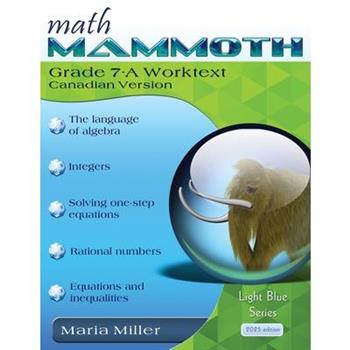

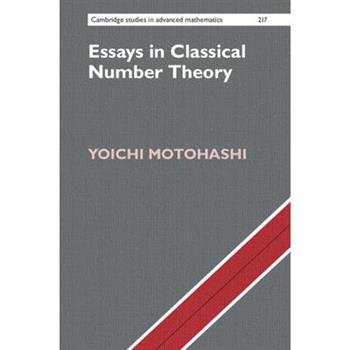
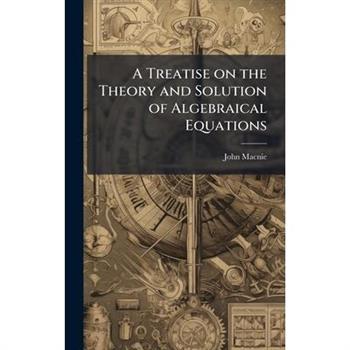
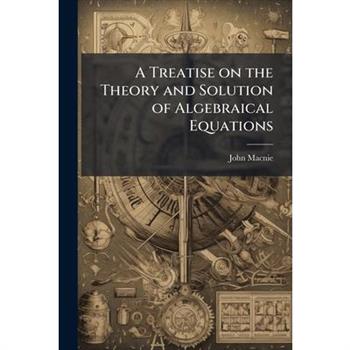
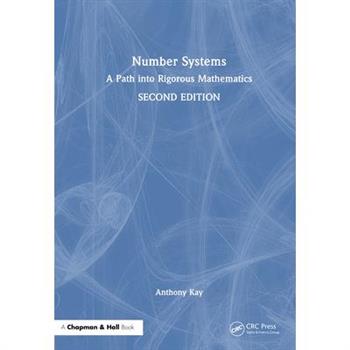


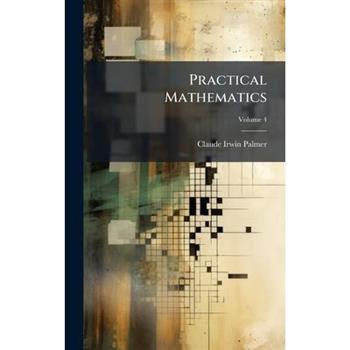
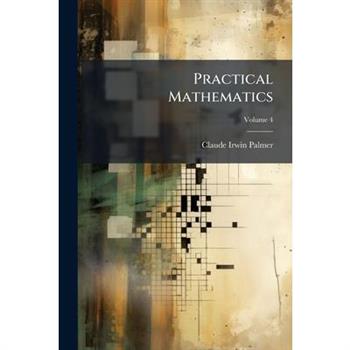
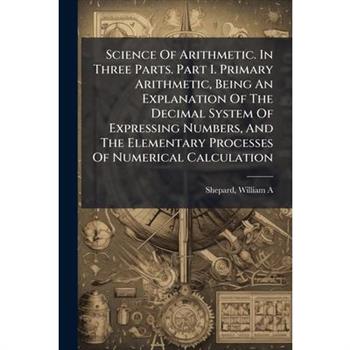
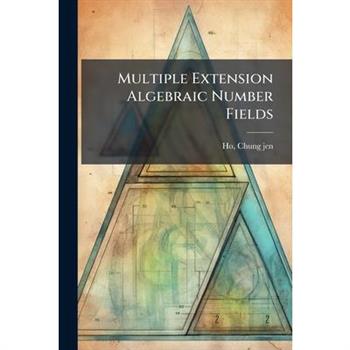

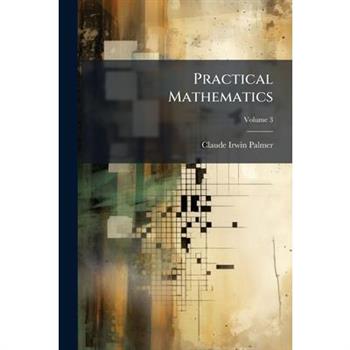
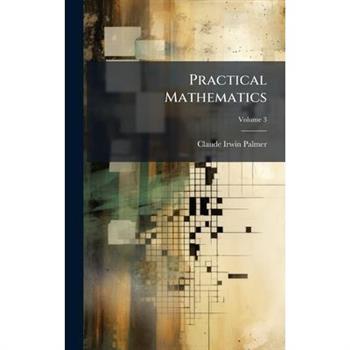
![An Introduction To Arithmetic. [with] Key An Introduction To Arithmetic. [with] Key](https://cdn.kingstone.com.tw/english/images/product/2083/9781024682083m.jpg?Q=ebb1f)
![An Introduction To Arithmetic. [with] Key An Introduction To Arithmetic. [with] Key](https://cdn.kingstone.com.tw/english/images/product/6487/9781024686487m.jpg?Q=9ba4c)
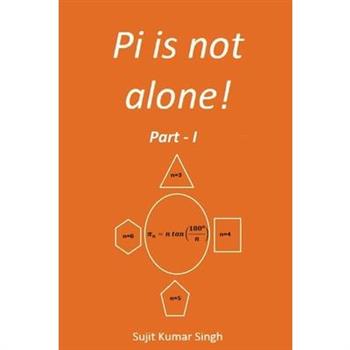

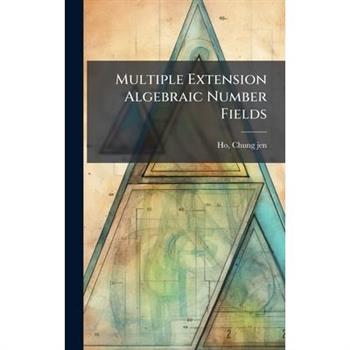
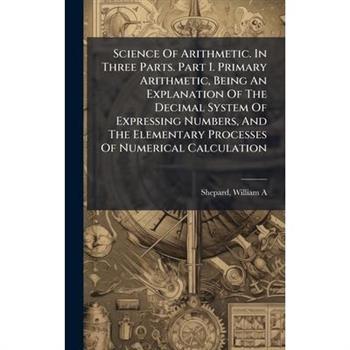
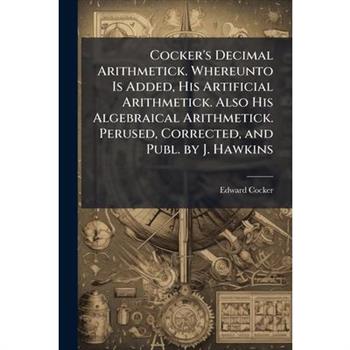


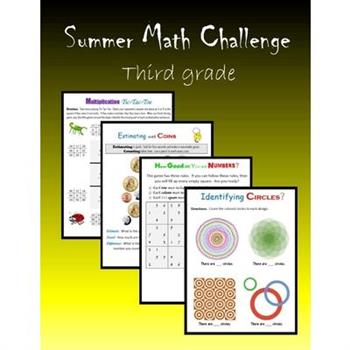
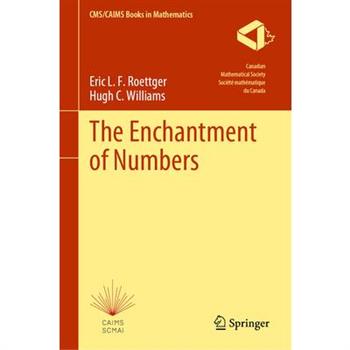
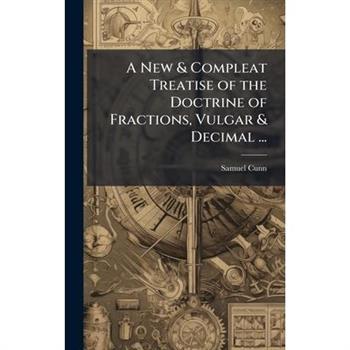
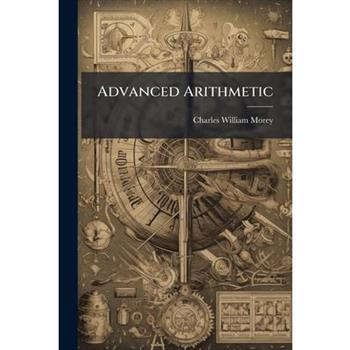
![Arithmetic [Elementary, Intermediate, Advanced] Arithmetic [Elementary, Intermediate, Advanced]](https://cdn.kingstone.com.tw/english/images/product/6017/9781023886017m.jpg?Q=f7e03)
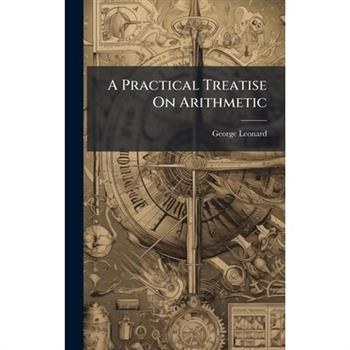
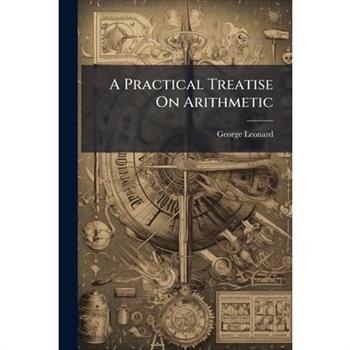
![Arithmetic [Elementary, Intermediate, Advanced] Arithmetic [Elementary, Intermediate, Advanced]](https://cdn.kingstone.com.tw/english/images/product/1005/9781023881005m.jpg?Q=8e09b)
